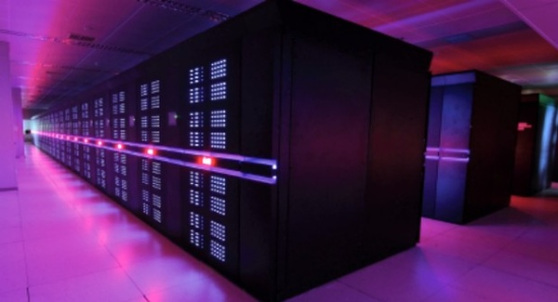
China’s supercomputer is better than yours.
The Tianhe-2 was ranked No. 1 on the TOP500 list of the world’s most powerful supercomputers. This marks China’s first return to the top position since November 2010, when the Tianhe-1A was named top dog.
Also known as Milky Way-2, the system was developed by China’s National University of Defense Technology. Most of the features were developed in China although TOP500 editor Jack Dongarra said it uses Intel products for the main computing part. Tianhe-2 has 16,000 nodes, each with two Intel Xeon IvyBridge processors and three Xeon Phi processors for a combined total of 3,120,000 computing cores. It will call the National Supercomputer Center in Guangzho, China its home.
The TOP500 list first started out of a conference in Germany in 1993 and is now a “much-anticipated, much-watched, and much-debated twice-yearly event.” The latest edition was announced today during the opening session of the 2013 Supercomputing Conference in Leipzig, Germany. Information about high-performing computers is of interest to manufacturers, users, potential users, and tech junkies. TOP500 publishes this list in an effort to strengthen the high-performance competing community and provide a better understanding of the market through communication and collaboration.
The list contains the 500 most powerful computing systems, which are judged by their performance on the Linpack Benchmark, a “yardstick of performance” that uses a dense system of linear equations to assess the systems. The list also tracks the sector’s development over time and identifies trends.
The latest report found that there are now 26 systems with performance greater than a petaflop, which is up from last year, and the total combined performance of all 500 systems has grown to 223 pflops, as compared to 162 plops six month ago and 123 pflops one year ago (I really like writing pflop). The entry level on the list moved unto 96.6 teraflops, compared to 76.5 teraflops six months ago.
A total of 54 systems are using accelerator/coprocessor technology, which is down from 62 in November 2012. Thirty-nine of these use Nvidia chips, three use ATI Radeon, and 11 systems use Intel MIC technology. Intel continues to provide the processors for the largest share (80.4 percent) of TOP500 systems. Eighty-eight percent of the system use processors with six or more cores. IBM’s BlueGene/Q is the most popular system among the top 10.
The list also looks at geographical trends. The U.S. is the leading costumer of high-performance computing systems. It has 252 of the 500 while Europe has 112 and Asia has 119. Of those systems, 66 are in China, 30 are in Japan, and the U.K. has 29.
The Milky Way-2 took the supercomputing throne away from Titan, a Cray XK7 system installed at the U.S. Department of Energy’s Oak Ridge National Laboratory. It is now ranked No. 2 for achieving 17.59 pflops on the Linpack Benchmark. It is still one of the most energy-efficient systems at the list. The third-place system is also part of the Department of Energy. Sequoia lives at the Lawrence Livermore National Laboratory.